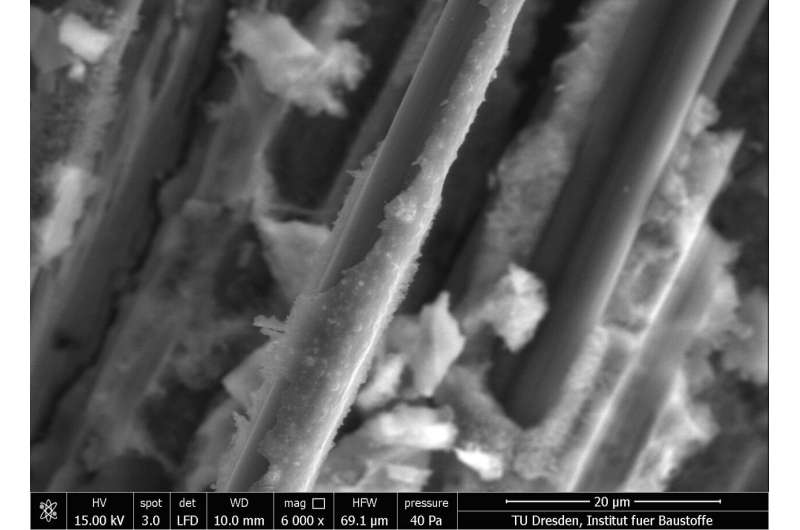Carbon fibers. Credit: TUD/Marco Liebscher
Carbon fibers (CF) are now more frequently used in composite materials due to their extremely high rigidity and strength—in recent years, they are also increasingly used in the construction industry. For concrete, this compound is not always sufficiently solid, especially at higher temperatures. Lightweight, flexible and needing significantly less resources than reinforced concrete, carbon concrete is considered to be the building material of the future.
The Institute of Construction Materials and the Institute of Structural Analysis at TU Dresden have collaborated with Shanghai Jiao Tong University in China to research which methods could be used to achieve even more stable composites.
These include both technological and physico-chemical approaches that can provide improved fiber-matrix interaction at different temperatures. Both textile-technological approaches, such as suitable coating or impregnation materials, and physico-chemical methods using plasma treatments or electrochemical deposition were identified as particularly promising.
In a review article published in Progress in Materials Science, the researchers from TU Dresden and Shanghai Jiao Tong University have now been able to present to a large specialist audience a comparative analysis of the various modification methods that are intended to enable improved load transfer between carbon fibers and cement-based matrices.
More information: Huanyu Li et al, A review of carbon fiber surface modification methods for tailor-made bond behavior with cementitious matrices, Progress in Materials Science (2022). DOI: 10.1016/j.pmatsci.2022.101040
Provided by Dresden University of Technology
























